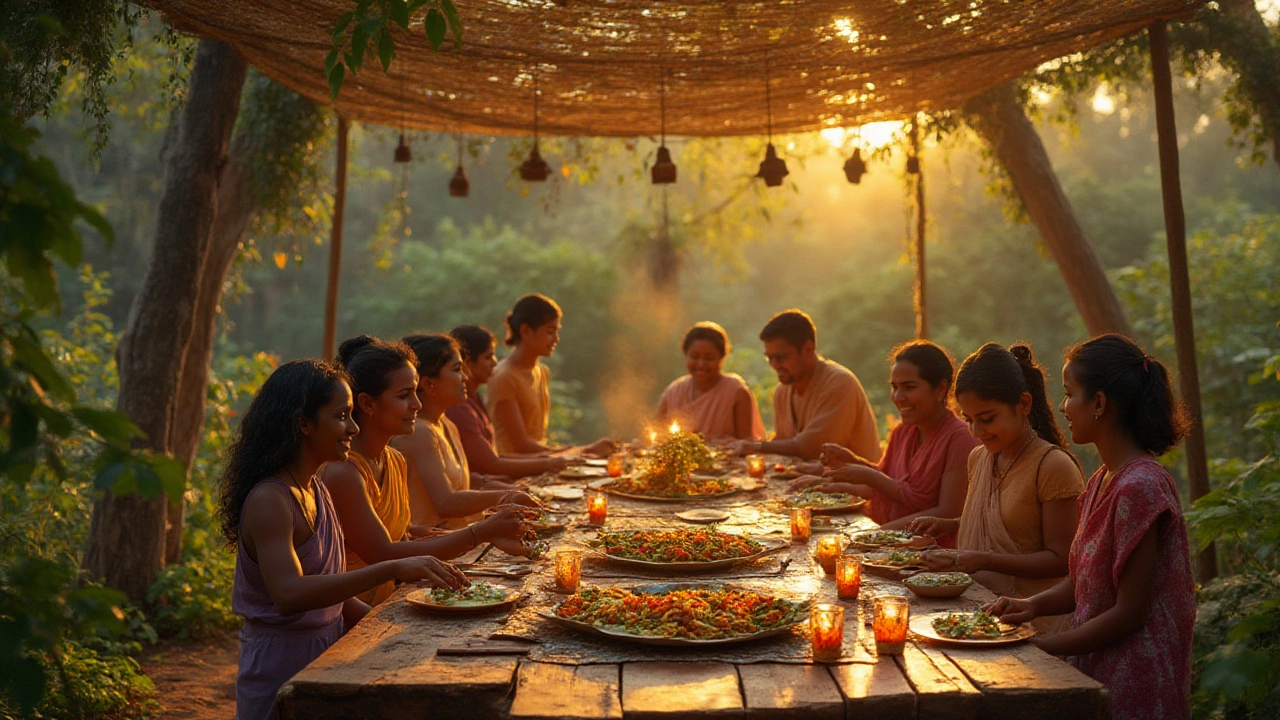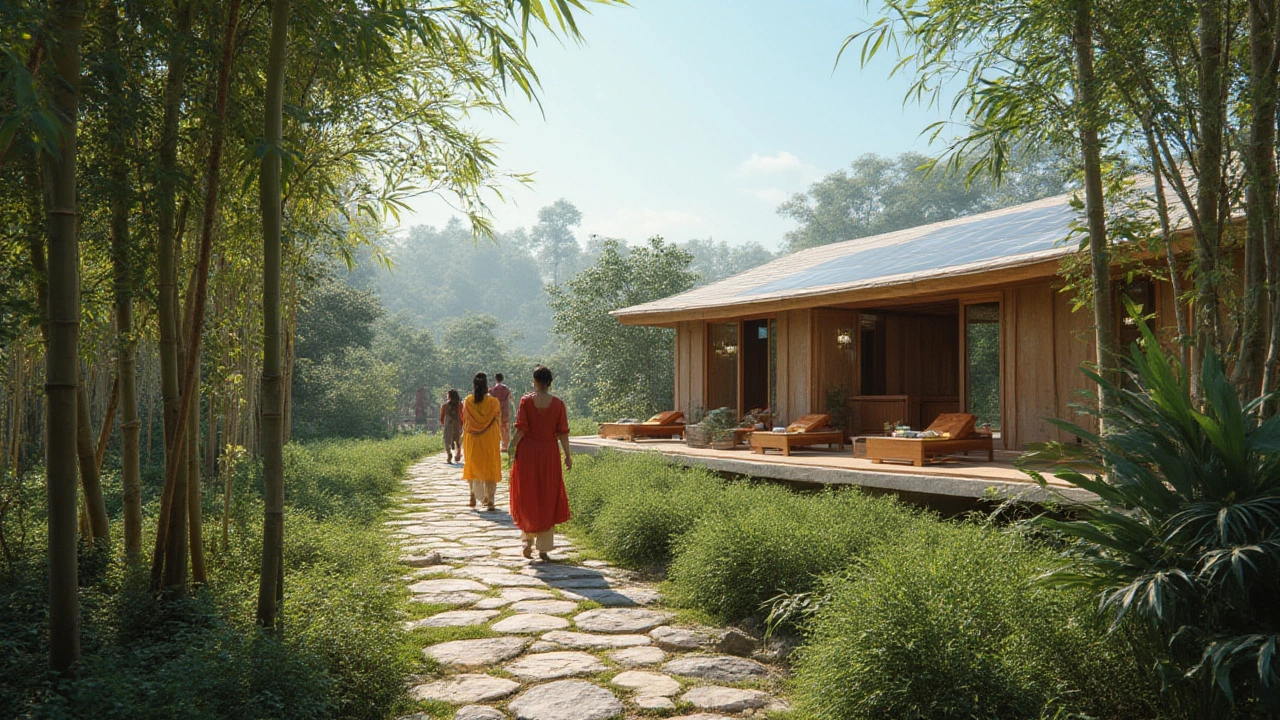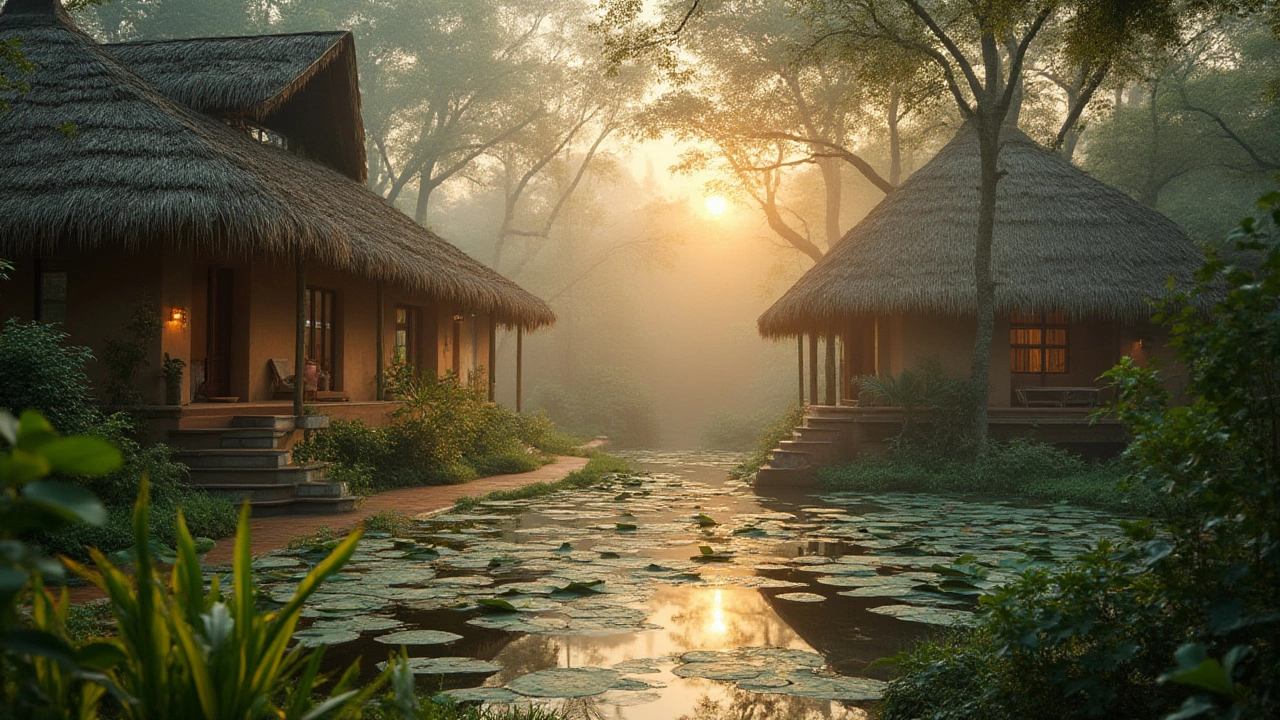Imagine a place where you can breathe fresh, toxin-free air, sip organic teas while watching rare birds flit past, and end your day with a spa treatment that uses only local, chemical-free ingredients. That’s not next-gen science fiction—welcome to the world of eco wellness resorts. With our world spinning ever faster and the drumbeat of climate news getting louder each year, these resorts offer a way to travel lighter, live healthier, and feel better—without sacrificing any comfort or luxury. You’ll find them tucked away in quiet forests, perched on pristine coastlines, or nestled in mountain valleys, each place whispering the same promise: you can look after yourself and the Earth at the same time. And trust me, after our last stay at a bamboo-clad eco lodge in Westland, Elliot kept talking about the taste of honey from their own hives for weeks. But what’s really under the hood of these places that sets them apart?
What Is an Eco Wellness Resort, Exactly?
At the core, an eco wellness resort is a hospitality haven that’s built with both your well-being and the planet’s health in mind. Let’s break it down: 'eco' stands for ecological responsibility, which means running the resort in ways that protect natural habitats, minimize pollution, and conserve resources. 'Wellness' refers to everything designed for your physical, mental, and emotional renewal—from yoga sessions at sunrise to nutrient-rich farm-to-table menus, tailored to restore balance in your life. But here’s the kicker: both goals—your wellness and the planet’s—are linked. These places use clever tricks like solar panels, natural ventilation, wastewater treatment gardens, and local construction materials. They swap plastic straws for edible pasta ones (if you haven’t crunched one by accident yet, be warned—they taste like, well, pasta) and have you refilling your water bottle from rain-harvested tanks. Their design might blend into the landscape, like an insect hotel hidden in the garden, or a wildflower meadow roof buzzing with bees, helping reverse biodiversity loss. What sets these places apart isn’t just their eco measures, but how they encourage guests to join the journey—think forest bathing walks, wildlife tracking, or indigenous food workshops. Here, the spa oils are from bush herbs, and the bath towels are sun-dried, not tumbled by gas dryers.
How Are Eco Wellness Resorts Different Than The Usual Hotel?
Let’s face it, most traditional hotels—though convenient—tend to leave a hefty footprint, from acres of manicured (and pesticide-ridden) lawns to buffets mounded with imported strawberries in winter, and more single-use plastic than you can shake a bamboo toothbrush at. Eco wellness resorts run a different race. Their footprints? Think lighter—literally. Instead of bulldozing the land, construction will hug the terrain. That ancient oak in the middle of the plot? It stays—you get your room built around it. Instead of hoovering up energy with giant air-conditioners, these resorts cool rooms using cross-ventilation or smart, plant-covered roofs. Food? Mostly local, seasonal, and organic—sometimes picked minutes before it hits your plate. You’re handed locally made soaps in paper—not plastic—wrappers, and the toiletries are often cruelty-free. Waste gets composted or repurposed, and anything bought in from outside is screened for sustainability certifications.
| Eco Wellness Resort | Traditional Hotel |
|---|---|
| Solar and renewable energy | Mostly fossil fuels |
| Organic, local cuisine | Imported, bulk food |
| Minimal plastic, lots of recycling | Mass single-use plastics |
| Nature-based activities (forest, ocean, etc.) | Gym or pool on-site |
| Guests involved in eco practices | Passive guest experience |

The Wellness Factor: What Makes It Special?
Eco wellness resorts don’t just leave you with a clear conscience—they usually aim to leave you healthier and happier, inside and out. That goes beyond the cliché “yoga class with a view.” For starters, these places have the space and quiet to let your body reset. You’ll sleep deeply because of the clean air and minimal EMF (electromagnetic field) disturbances—some even purposely avoid Wi-Fi in rooms so you can digitally detox. Menus lean heavy on plant-based, whole foods, with gluten-free or dairy-free options, and many places can cater to special diets—even raw vegan or Ayurvedic meals. Wellness programs are shaped around real science and ancient practice: forest therapy walks (Japanese shinrin-yoku), herbal workshops, nutrition classes, and even sleep coaching. If you need numbers: A 2023 Global Wellness Institute report found that the wellness tourism market reached over $900 billion and is outpacing regular travel growth by 7% every year. And eco resorts are riding that wave. Resort spas might feature techniques unique to the region—imagine a massage using kawakawa oil in New Zealand, or sound baths with handmade crystal bowls. Outdoor movement isn’t just for the fit—gentle hikes, mindful breathing classes, and guided meditations are regular fixtures. In the evenings, you could watch local stargazers teach constellation lore or join a silent barefoot walk under the moon. A tip for future guests: Always check for real wellness certifications, not just marketing buzzwords. Look for programs like Global Wellness Institute membership, or stamps from organizations like Green Globe or EarthCheck—these actually audit eco and wellness claims, so you know it’s the real deal, not just a photo of a salad next to a potted plant.
How to Pick the Perfect Eco Wellness Resort
The eco wellness scene is booming, but not all places are equally committed. Some are just cashing in on the green trend. So how do you pick one that genuinely walks the talk? Start by digging into their sustainability policies—these should be right up front on their site, not buried in fine print. Do they talk about how their buildings were made? Where their food comes from? Are they transparent about waste, energy, and conservation projects? The best resorts are clear and even a little bit proud of their efforts—some will show you behind the scenes, letting you tour their composting set-up or chat with their in-house permaculturist. Check independent reviews for mentions of greenwashing (using eco-friendly terms just for marketing). If the place calls itself eco but has imported half its furniture or offers imported bottled water, that’s a red flag. Other tips: Read up on their social impact, not just environmental. The resort should employ locals, buy from nearby small farms, and support community projects. Real eco wellness also means treating people right. It’s a bonus if the resort offers activities that let you connect with nature and culture, like wild harvesting walks or meeting a local elder. Lastly, don’t forget your own needs—think about how much solitude, adventure, or pampering you want. Some eco wellness resorts are pure unplugged sanctuaries with barely any Wi-Fi, while others blend wellness with soft adventure—think guided bike tours, kayaking, or even eco-volunteering. A fun stat? According to Booking.com's 2024 Sustainable Travel Report, over 76% of global travelers now want to stay somewhere "at least partly eco-friendly." The demand is real, and the options are getting better every year.

Eco Wellness Resorts in Action: Inspiring Real-World Examples
Some resorts set the gold standard for what an eco wellness resort can look like. For example, Aro Hā in New Zealand’s Southern Alps regularly pops up in best-of lists for its near-zero waste systems, solar/battery power, vegan cuisine grown on-site, and a daily schedule that balances vinyasa yoga, whole food cooking classes, hiking, and mindful relaxation. They compost everything, even kitchen scraps, and keep their footprint tiny even when at full capacity. Another one to marvel at is Six Senses in Vietnam—a brand known for going off-diesel years ago, treating all wastewater, investing in mangrove restoration, and offering workshops on local plant medicine. Guests can collect veggies for breakfast or try out Vietnamese bamboo massage—a lot more relaxing than it sounds. In Costa Rica, Lapa Rios turns the rainforest into your own wellness playground, with trails led by expert naturalists and a promise that not a single tree was cut down to build the bungalows. Here in New Zealand, you’ll find smaller gems like The Resurgence near Abel Tasman, working hard to be plastic-free and showing guests how they regenerate bushland that was once grazed land. I can’t forget the feeling of a night swim under a zillion stars in their spring-fed pool—clean, cold, and alive in a way chlorinated hotel pools just can’t match. These places don’t just cut down waste—they revive their landscapes, employ conservationists and rangers, and fund local wildlife rescue efforts right through your stay.
| Resort | Country | Unique Eco Features |
|---|---|---|
| Aro Hā | New Zealand | Zero waste, solar energy, farm-to-table vegan meals |
| Six Senses Ninh Van Bay | Vietnam | Mangrove restoration, local healing traditions |
| Lapa Rios | Costa Rica | Biodiversity corridors, rainforest renewable energy |
| The Resurgence | New Zealand | Local staff, forest regeneration, natural spring pools |
